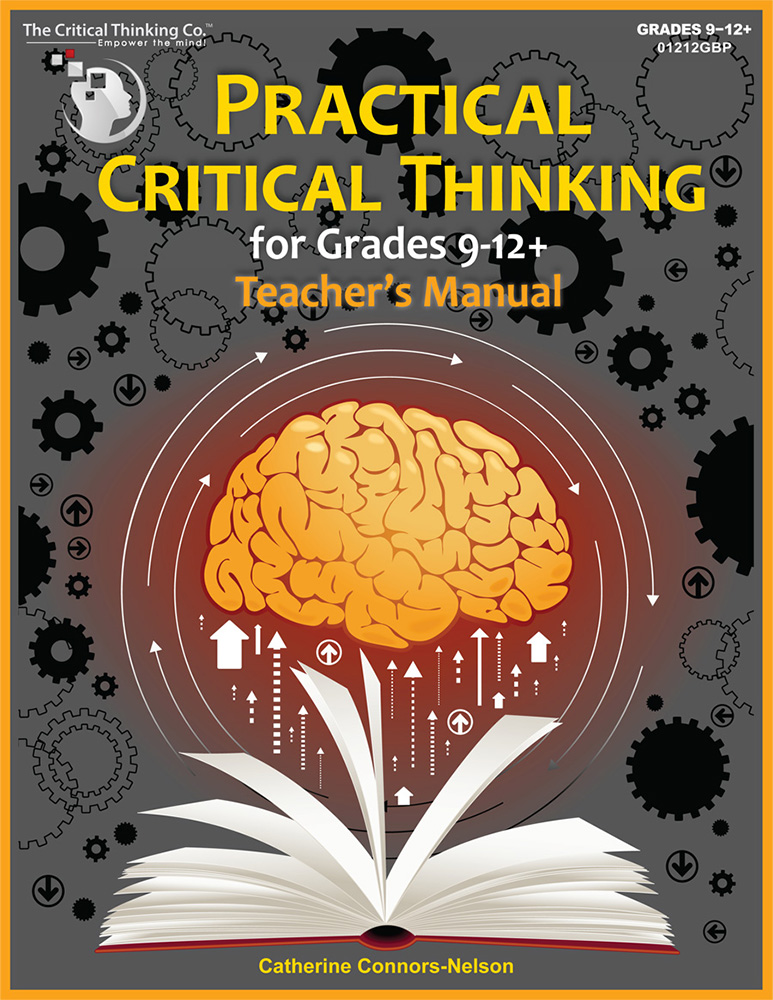Practical Critical Thinking: Teacher's Manual
Problem-Solving • Reasoning • Logic • Arguments
Grades: 8-12+
Critical Thinking

Practical Critical Thinking: Teacher's Manual
Practical Critical Thinking: Teacher's Manual
1
5
5
1
$22.99
Description and Features
SKU
01212GBP
Description and Features
Problem-Solving • Reasoning • Logic • Arguments
Description and Features
This detailed, 304-page, Teacher's Manual is highly recommended to be used with Practical Critical Thinking: Student Book.
Topics covered are:
• The Basics of Critical Thinking
• Obstacles to Critical Thinking
• Evaluating Evidence
• Creative Problem-Solving
• Ambiguity, Vagueness, and Doublespeak
• Arguments
• Informal Fallacies
• Advertising
• Eyewitness Testimony, Direct & Circumstantial Evidence
Product Details
| Item#: | 01212GBP |
| Author(s): | Catherine Connors-Nelson |
| TOC: | View Table of Contents |
| Subject: | Critical Thinking |
| Type: | Instruction/Answer Guide |
| Media: | Paperback Book |
| License: | Reproducible |
| ISBN–10: | 1-60144-770-1 |
| ISBN–13: | 978-1-60144-770-8 |
| Pages: | 304 |
Awards
Tillywig Brain Child Award, 2015
Customer Reviews
1
Reviews
0%
of customers
recommend this product
recommend this product
Sort by
Rating
Newest
Helpfulness
Jul 27, 2015
The learning strategies employed in Practical Critical Thinking take into account the unique qualities of the adolescent brain. Consequently, students find the material both enjoyable and easy to absorb. It is organized and expressed in such a way as to maximize attention and encourage motivation through fun, concrete activities that create positive learning experiences. Chapters are divided into concise, digestible sections that engage students in the processes of elaborating, verbalizing, sharing, writing, and drawing, mixing concrete experiences with symbolic and abstract learning. Novelty and prediction are consistently used as a means of arousing students' curiosity, making them active participants in the learning process. As a result, students buy into the concepts presented and quickly develop the practice of using these skills in their daily lives, the benefits of which are immediate and far-reaching.





 View Sample Pages
View Sample Pages
